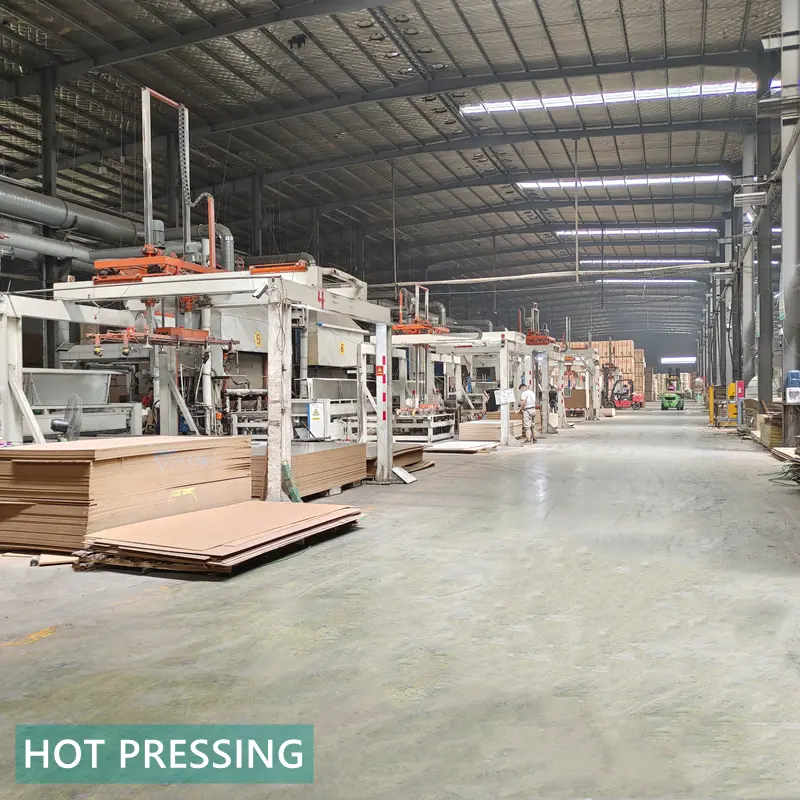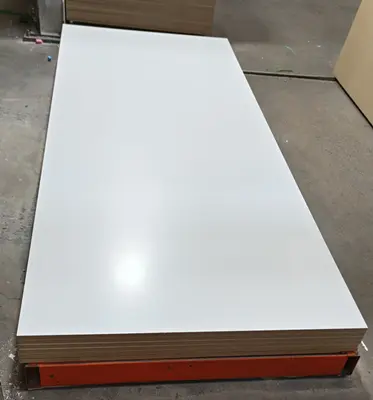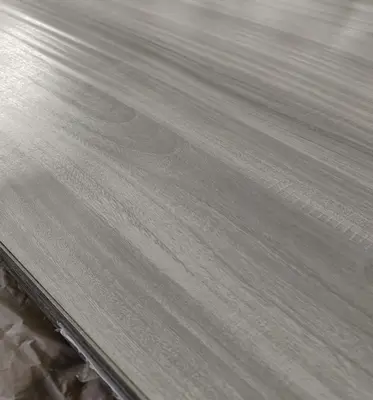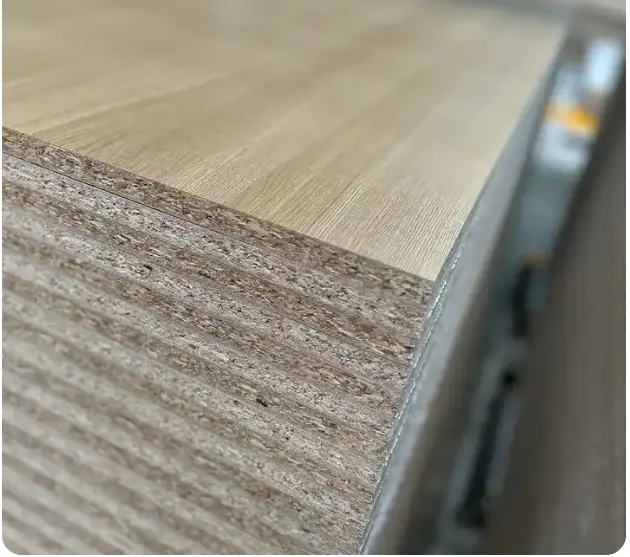Are you looking for furniture that’s both budget-friendly and environmentally conscious? This article dives into the world of particle board, exploring its benefits, and addressing common questions. Discover why particle board furniture is becoming a top choice for homeowners, cabinet makers, and interior designers alike, offering a sustainable and stylish solution for a variety of needs. We’ll delve into its manufacturing process, advantages, and how it compares to other wood product options, helping you make informed decisions for your next project.
What Exactly is Particle Board, and How is it Made?
Let’s start with the basics: particle board, often referred to as particleboard, is a type of engineered wood product made from wood particles such as sawdust, wood fiber, or even wood chips, combined with a binder like a synthetic resin. The process involves mixing these wood scraps with the resin, and then subjecting the mixture to heat and pressure. This process bound together the wood particles creating a panel. The resulting panel is then cut to size and can be used for a variety of applications, most commonly furniture. This engineered wood product is a cost-effective and versatile material used in the manufacture of furniture, cabinetry, and other interior applications.

The manufacture of particle board is an ecological alternative to using solid wood. It allows for the reuse of wood waste and reduces the need to harvest new trees. This makes it a more sustainable choice compared to solid wood furniture, which requires significant resources to produce. The wood fiber is bound together with a synthetic resin, forming a strong and stable panel.
Particle board‘s manufacturing process involves several steps:
- Preparation: The wood particles (chips, flakes, or sawdust) are screened to ensure a consistent size.
- Mixing: The wood particles are mixed with a synthetic resin, typically urea-formaldehyde or a similar adhesive.
- Forming: The mixture is spread into a mat, with heat and pressure applied to compress the particles and cure the resin.
- Finishing: The particleboard is then trimmed, sanded, and can be laminated with a veneer or laminate for added durability and aesthetics.
Is Particleboard a Type of Plywood? Exploring the Difference
This is one of the most related questions we get: No, particleboard is not the same as plywood. Although both are engineered wood products, they are made differently. Plywood is made from thin layers of wood veneer that are glued together with the grain of each layer running in alternating directions. This cross-graining gives plywood great strength and stability. Particleboard, on the other hand, is made from wood chips and sawdust and is not as strong or water-resistant as plywood.
The core difference lies in their composition:
- Plywood: Composed of thin layers (veneers) of wood glued together with alternating grain direction.
- Particleboard: Made from wood particles, chips, sawdust, and a resin binder pressed under heat and pressure.
Here’s a table summarizing the key differences between plywood and particleboard:
| Feature | Particleboard | Plywood |
|---|---|---|
| Materials | Wood particles, resin | Wood veneers, adhesive |
| Strength | Lower | Higher |
| Water Resistance | Less resistant, may swell if exposed to water | More resistant |
| Cost | More affordable | Generally more expensive |
| Surface | Can be smooth, often laminated | Can be smooth, varies with veneer quality |
| Applications | Furniture, cabinet backs, shelving | Construction, subflooring, furniture, cabinet frames |
The choice between particleboard and plywood often depends on the intended application and budget. For instance, plywood is often used in structural applications, while particleboard is well-suited for projects where cost is a primary concern. To learn more about particle board and the benefits of this material, check out our Factory Price Melamine MDF Board product page.
Is MDF Better Than Particle Board for Furniture? Comparing the Core Materials
Another frequent query is whether MDF (medium-density fiberboard) is superior to particleboard for furniture. While both are engineered wood products, they have distinct characteristics. MDF is made from wood fiber that’s broken down into even finer particles than particleboard, and it uses a different resin binder. This results in a panel that is denser, smoother, and has more uniform properties throughout. MDF is often used for cabinet doors and furniture where a smooth surface is essential, as it takes finish and paint better than particleboard.
MDF compared to particleboard:
- Density: MDF has a higher density than particleboard, making it stronger and more resistant to warping.
- Surface: MDF has a smoother surface, ideal for painting and detailed finish applications. Particleboard can be less smooth.
- Moisture: MDF is only slightly more resistant to moisture than particleboard. Both will swell and degrade when exposed to water.
- Screw Holding: MDF generally holds screws better than particleboard, though proper techniques are still needed.
- Cost: MDF is typically more expensive than particleboard.

In summary, MDF can be a better choice for projects requiring a smooth paintable surface and higher durability, whereas particleboard remains a cost-effective option for applications where these factors are less critical. MDF also is very often used in the manufacture of cabinets made from melamine faced MDF board.
To explore MDF options, visit our Melamine MDF board panel product page.
What Are the Advantages of Using Particle Board in Furniture?
Particle board offers a unique combination of benefits that make it a popular choice in furniture manufacture. One of the primary advantages is its affordability. Because it’s made from recycled wood waste, it’s significantly more affordable than solid wood. This makes it an excellent choice for budget-conscious consumers and high-volume furniture production. This allows manufacturers to offer furniture that’s both stylish and accessible.
Other key advantages include:
- Affordability: Particle board is more affordable than solid wood or even plywood, helping to reduce the overall cost of particle board furniture.
- Versatility: It can be easily cut, shaped, and laminated with a variety of finishes, including veneers and laminate, making it suitable for a wide range of furniture designs.
- Lightweight: It is often lightweight relative to its size and strength, making it easier to handle and installation.
- Sustainability: As it’s made from recycled wood, it’s an eco-friendly option.
- Consistent Quality: Offers a consistent density and a uniform surface.
- Size and Shape: Panel are made in a variety of sizes and shapes.
The versatility of particle board also means it can be engineered to meet specific requirements. For example, it can be made moisture–resistant. Particle board is also very often laminated with a variety of finishes.
What Are Some Popular Categories for Particle Board Furniture?
Particle board is used in various popular furniture categories due to its versatility and cost-effectiveness. Its smooth surface and ability to be laminated make it ideal for a range of applications, and its affordability makes it a favorite among manufacturers targeting various market segments.
Here are some of the popular categories for particle board furniture:
- Cabinets: Kitchen, bathroom, and storage cabinets often utilize particleboard for the carcass (the main box of the cabinet). The panels can be laminated to create a durable and aesthetically pleasing surface.
- Shelving: Bookshelves, storage shelves, and display units frequently use particle board. The material is strong enough to support various items while providing a cost-effective shelving solution.
- Desks and Workstations: Office desks, computer tables, and student desks are commonly constructed from particleboard, often laminated with a wood veneer or a durable laminate surface.
- Bedroom Furniture: Beds (especially bed frames), dressers, and nightstands are frequently made from particle board, especially in budget-friendly lines.
- Entertainment Centers: Television stands, media consoles, and entertainment centers often incorporate particle board for their construction, providing a stable and versatile platform for electronics.

The ability to laminate particle board with different materials, such as wood veneer or laminate, gives it versatility to match different styles and aesthetics.
Is Particle Board Furniture Durable? Assessing Lifespan and Resistance
The durability of particle board furniture is a common concern, and it is important to evaluate its lifespan and resistance to various factors. While it is not as inherently durable as solid wood furniture, it can still offer a reasonable lifespan, especially when properly cared for and used in the right conditions.
Here’s a breakdown of the factors affecting the durability of particle board furniture:
- Lifespan: With proper care, particle board furniture can last for many years. Its lifespan is often shorter than that of solid wood furniture, but it can still be a good investment, particularly if the furniture is not subjected to extreme use or moisture.
- Moisture Resistance: Particle board is less resistant to moisture than plywood or solid wood. Exposure to moisture can cause it to swell, warp, and lose its structural integrity. Therefore, it is crucial to keep particle board furniture away from wet environments.
- Scratch and Dent Resistance: The durability is highly dependent on the finish. A laminate or veneer surface can provide a reasonable level of scratch resistance. However, deeper scratches or impacts can damage the surface and expose the particle board underneath.
- Wear and Tear: The level of wear and tear depends on how the furniture is used and the density of the particle board. Heavy use can accelerate the wear process.
- Screw Holding: Particle board can strip easily, and can be less resistant than solid wood when it comes to supporting the weight of repeated screw insertions and removals.
To maximize the lifespan of your particle board furniture:
- Protect it from moisture: Clean spills immediately and avoid placing it in areas prone to humidity.
- Use coasters and placemats: To prevent scratches and water damage.
- Avoid overloading: Do not exceed the weight limits.
How Does the Finish Impact Particle Board Furniture’s Look and Performance?
The finish applied to particle board furniture plays a significant role in both its aesthetic appeal and its performance characteristics. The right finish can enhance the look, improve durability, and increase resistance to moisture and wear. The most common finishes are veneers and laminates.
Finishes for particle board are:
- Laminates: Laminates are a popular choice, as they are durable, resistant to scratches and moisture, and available in a wide range of colors and designs, including wood grain patterns. They provide a cost-effective way to create an attractive and practical surface. Laminate is an especially ideal choice for cabinet furniture.
- Veneers: Wood veneer is a thin layer of solid wood that is applied to the surface of particle board. It gives the furniture the look of solid wood at a lower cost. Veneer can be finished with stains, paints, or clear coats to enhance its appearance. Wood veneer gives the furniture a high-end look, while still making use of the sustainability of particleboard.
- Paint: Particle board can be painted, but the surface needs to be properly prepared with a primer to ensure good adhesion. Painting allows for customization.
- Melamine: Melamine laminate is another common finish. It’s highly durable, resistant to scratches and stains, and available in a wide range of colors. Our Melamine Particle Board Double Sides White product showcases this versatility.

The choice of finish impacts:
- Aesthetics: The finish determines the look and style of the furniture, influencing whether it has a wood grain, solid color, or other decorative patterns.
- Durability: The finish affects the furniture’s resistance to scratches, stains, and moisture.
- Maintenance: Certain finishes are easier to clean and maintain than others.
Is Particle Board Furniture a Sustainable and Eco-Friendly Choice?
Sustainability is a growing concern for many consumers, and particle board furniture offers several eco-friendly benefits. Because particle board is made from wood chips, sawdust, and other wood-based byproducts, it helps to reduce waste from the forestry industry and the manufacture of other wood products.
Here’s how particle board contributes to sustainability:
- Recycled Materials: The use of recycled wood and wood waste reduces the demand for newly harvested trees.
- Waste Reduction: It helps to minimize waste by utilizing materials that would otherwise be discarded.
- Resource Efficiency: Using wood waste reduces the consumption of natural resources.
- Potential for Recycle: The wood from particle board can be recycled or reused, although it is more complex compared to recycling solid wood.
However, there are some ecological considerations:
- Resin Emissions: The synthetic resin used to bind the wood particles can release formaldehyde, which is a potential health hazard. Look for particle board that meets low emission standards (e.g., CARB P2, E1/E0), and has a low toxicity.
- Transportation: The footprint of transporting materials can be higher, depending on the distance between the manufacture and the consumer.
- Pollution: There is some pollution associated with the manufacturing process, which can affect its overall ecological profile.
What Are the Potential Downsides of Using Particle Board?
While particle board offers many benefits, it’s also important to be aware of its potential downsides. Understanding these can help you make informed decisions about whether it’s the right material for your needs.
Here are some of the potential issues:
- Susceptibility to Moisture: Particle board is less resistant to moisture. When exposed to water, it can swell, warp, and lose its structural integrity. This is a significant limitation, especially in areas with high humidity or where spills are common.
- Lower Durability: Particle board is typically less durable than solid wood, plywood, or MDF. It can be more prone to damage from impacts, and the surface can scratch or dent more easily.
- Limited Screw Holding: The material can have limited screw-holding capability, particularly if screws are inserted and removed repeatedly. This can be a problem for assembly and disassembly.
- May Have a Shorter Lifespan: Particle board furniture may have a shorter lifespan compared to solid wood furniture, particularly if it is not well cared for or subjected to heavy use.
- Formaldehyde Emission: Some particle board contains formaldehyde, a potential health hazard. It is essential to choose particle board that meets emission standards like CARB P2 or E1/E0 to minimize this risk.
To mitigate these downsides:
- Protect the furniture from moisture.
- Choose finishes that provide additional durability.
- Handle the furniture carefully.
- Select particle board with low emission levels.
How Does the Installation of Particle Board Furniture Work?
The installation of particle board furniture is generally straightforward, but it’s essential to follow the manufacturer’s instructions carefully. Particle board is often delivered in flat packs, requiring some assembly. This can be an advantage as the packaging is efficient.
Here are some tips for a successful installation:
- Read the Instructions: Always read the instructions provided by the furniture manufacturer before beginning.
- Prepare the Workspace: Clear a workspace to organize parts and tools.
- Inventory the Parts: Verify that all parts are included and undamaged.
- Use the Right Tools: Commonly needed tools for particle board furniture installation are:
- Screwdriver (Phillips and flathead)
- Allen wrenches
- Hammer
- Measuring tape
- Assemble Carefully: Follow the instructions step-by-step. Avoid over-tightening screws, as this can damage the particle board.
- Secure Connections: Ensure all connections are tight and secure.
- Finishing Touches: Add any decorative elements or accessories.

If you encounter any problems, consult the manufacturer’s customer support or seek assistance from a handyman.
Particle Board Furniture: Your Smart Choice
In summary, particle board offers a compelling combination of benefits, including affordability, versatility, and sustainability. While it may not be the most durable option compared to solid wood furniture, its advantages make it an ideal choice for many applications. By considering the advantages and potential limitations, you can make an informed decision about whether particle board furniture is right for your needs. Our products, such as our Factory Price Melamine MDF Board, offer high-quality particle board options for various projects.
- Affordability: It’s a cost-effective choice, making it accessible for various budgets.
- Versatility: It is available in a wide range of finishes, including veneers and laminates, which makes it adaptable to various styles.
- Sustainability: Particle board is made from recycled wood, reducing waste.
- Durability: Although less durable than solid wood, it can last a long time if properly cared for.
- Ease of Use: Installation is typically straightforward with easy-to-follow instructions.
Partner with us! We are a leading manufacturer and supplier of particle board and decorative materials. With our expertise and commitment to quality, we can help you create stunning and sustainable furniture solutions. Contact us today to learn more about our products and services. We are a reliable wood-based panel manufacturer from China, specializing in quality and performance. Feel free to browse our offerings for your needs: Factory Directly Sale High Quality best price Melamine faced MDF board different thickness 0.8-25mm For Furniture, Factory wholesale cheap price High Quality 3mm 10mm 15mm 16mm 17mm 18mm melamine mdf board For Furniture cabinet door, and High Quality Decorative Laminated Melamine Paper For Mdf OSB Plywood Particle Board.
Post time: 02-20-2025











